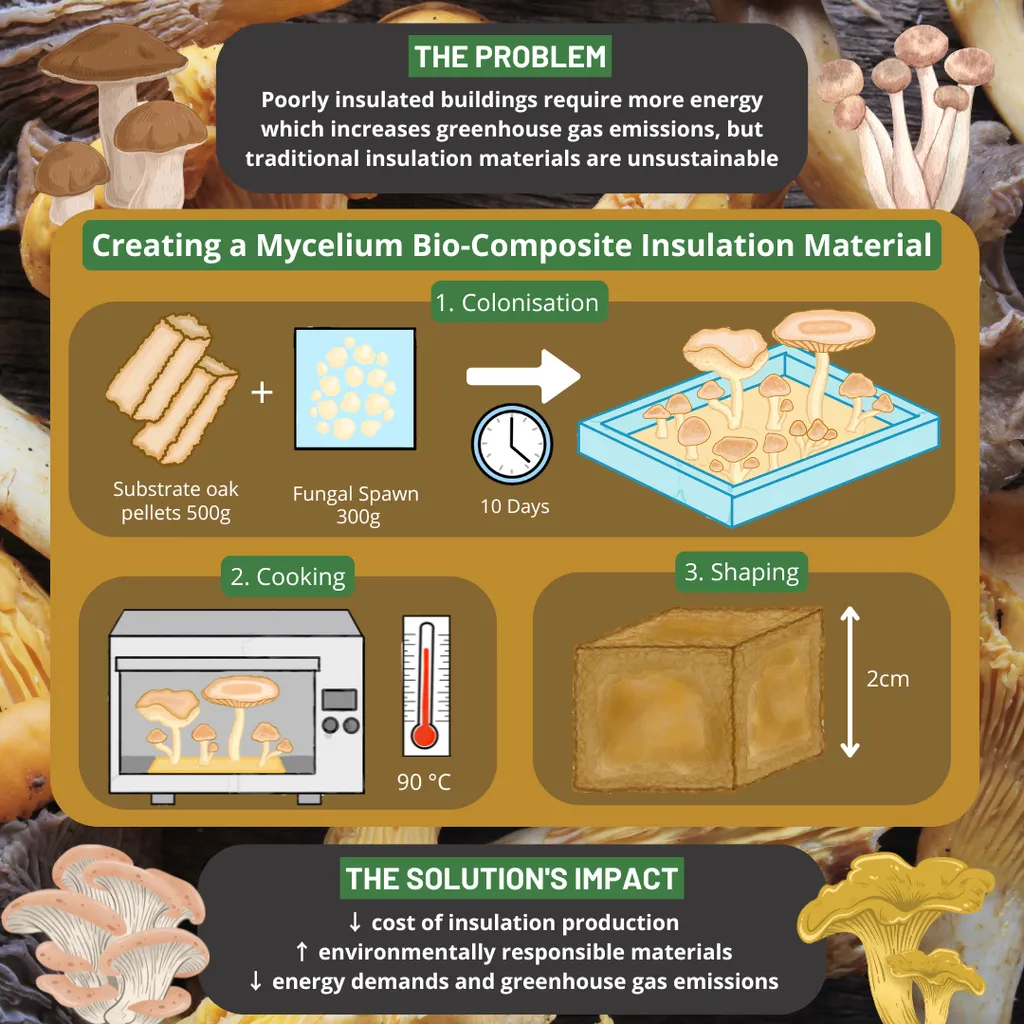In the quest for sustainable building materials, a team of researchers led by Sina Motamedi from the Research Group in Energy Technologies and Energy Efficiency (t3e) at École de Technologie Supérieure (ÉTS), part of Université du Québec in Montreal, has turned to an unlikely ally: fungi. Their focus is on mycelium bio-composites (MBCs), a promising alternative to traditional insulation materials that could significantly impact the energy sector.
Mycelium, the vegetative part of fungi, can be grown into bio-composites using lignocellulosic waste, such as agricultural byproducts. These MBCs offer a range of benefits, including low embodied energy, biodegradability, and effective hygrothermal performance. In a recent review published in the journal *Energies* (translated to English as “Energies”), Motamedi and his team assessed the current state of MBC fabrication and hygrothermal properties, highlighting their potential to revolutionize the construction industry.
One of the most compelling aspects of MBCs is their thermal conductivity, which ranges from 0.036 to 0.06 W·m⁻¹·K⁻¹. This makes them highly effective as insulation materials, comparable to conventional options but with a significantly lower environmental footprint. “MBCs can offer up to 70% lower embodied carbon than conventional materials,” Motamedi explains, underscoring their potential to reduce the carbon footprint of buildings.
Beyond their thermal properties, MBCs also excel in moisture buffering, a critical factor in maintaining indoor air quality and energy efficiency. “They exhibit moisture buffering capacity comparable to plant-fiber composites,” Motamedi notes, highlighting their versatility and adaptability to different environmental conditions.
However, the path to widespread adoption is not without challenges. The review identifies key hurdles, including process standardization, scalability, and durability under real-world conditions. “We need to develop standardized fabrication protocols and conduct quantitative lifecycle assessments of MBCs across varying climates,” Motamedi emphasizes, pointing to targeted research priorities that could pave the way for broader adoption.
Recent advancements in additive manufacturing and microstructural optimization offer promising solutions to these challenges. By optimizing the growth conditions and composition of MBCs, researchers can enhance their mechanical and hygrothermal properties, making them more suitable for large-scale applications.
The potential commercial impacts for the energy sector are substantial. As buildings account for a significant portion of global energy consumption, the adoption of MBCs could lead to more energy-efficient structures, reducing overall energy demand and lowering carbon emissions. Moreover, the use of lignocellulosic waste in MBC production aligns with the circular economy principles, promoting sustainable resource utilization and waste reduction.
In conclusion, the research led by Motamedi and his team at ÉTS highlights the promising potential of mycelium bio-composites as sustainable building materials. By addressing key challenges and leveraging recent technological advancements, MBCs could play a pivotal role in shaping the future of the construction industry and the energy sector. As Motamedi aptly puts it, “The journey towards sustainable buildings is underway, and mycelium bio-composites are at the forefront of this exciting evolution.”

